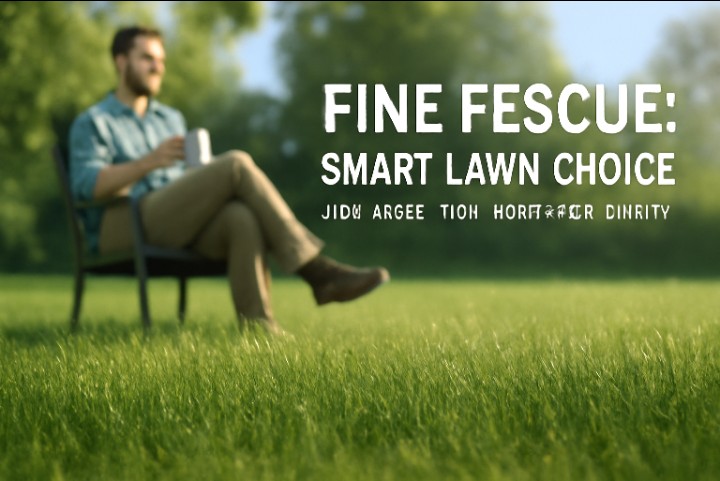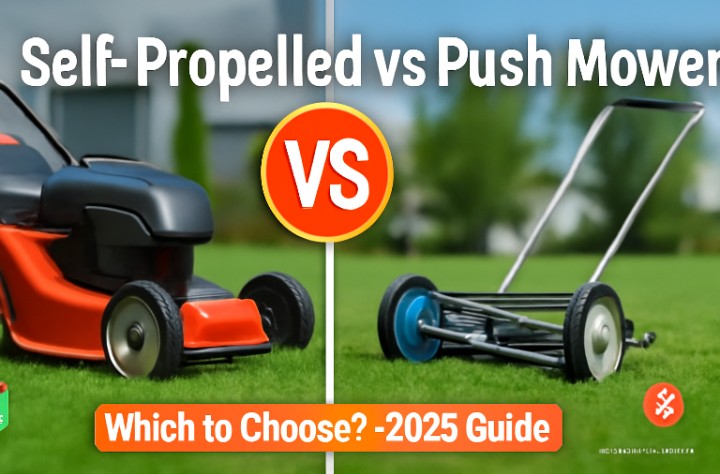Your beautiful lawn does not have to suffer through another brutal summer. Those brown patches and faded grass can disappear with the right approach. I have seen countless homeowners in Western cities struggle with heat-damaged lawns. Phoenix residents know this pain all too well. Denver homeowners face similar challenges when temperatures soar.
The solution is not complicated. Three specific treatments can revive your grass before autumn arrives. Each one targets a different aspect of summer lawn stress. You will need nitrogen fertilizer for nutrition. Iron supplement provides rapid color enhancement. Organic compost creates better growing conditions. Together, they transform struggling turf into something neighbors admire.
1st Thing : Summer-Appropriate Nitrogen Fertilizer
Why Your Grass Craves Nitrogen
Think of nitrogen as breakfast for your lawn. Without it, grass loses that vibrant green color we all want. Chlorophyll production depends entirely on adequate nitrogen levels. Hot weather complicates everything. Your grass basically hibernates during heat waves. Root activity slows down significantly. Nutrient absorption becomes less efficient.
Smart homeowners choose slow-release formulations during summer months. Quick-release products can literally cook your grass when temperatures climb. I have witnessed this disaster too many times. The goal changes during summer. Instead of pushing aggressive growth, you are maintaining color and health. Feed your lawn gently rather than forcing rapid development.
Choosing the Right Formula
Cool-season varieties like Kentucky Bluegrass require special consideration. A 10-0-20 ratio works perfectly for these grass types. The lower nitrogen prevents heat stress while potassium boosts drought tolerance. Warm-season grasses handle summer differently. They are actually growing actively during hot months. A 20-0-10 formula supports their natural growing cycle without overwhelming them.
Stay away from straight urea products. These release nitrogen too quickly for summer conditions. Polymer-coated options release nutrients gradually over months rather than weeks. Late summer timing sets up fall success. August applications help grass prepare for autumn growth spurts.
Application Best Practices
Early morning works best for summer fertilizing. Temperatures are coolest then. Dew helps products stick to grass blades initially. Heat waves demand patience. Never fertilize when thermometers hit 85°F or higher. Wait for milder conditions to return.
Water immediately after spreading fertilizer. This moves nutrients into soil where roots can access them safely. Leaving granules on leaf surfaces causes burns. Package directions matter more during summer than any other season. Over-application becomes dangerous when grass is already stressed.
2nd Thing: Iron Supplement for Rapid Greening
The Magic of Iron
Iron delivers results faster than any other lawn treatment. You will notice color improvements within just a few days of application. Here is the science behind it. Iron is essential for chlorophyll formation. Without enough iron, grass develops yellow patches called chlorosis. Adding iron reverses this process quickly.
Summer heat makes iron even more valuable. While nitrogen forces growth, iron enhances color without stressing grass. Perfect combination for hot weather challenges. Professional landscapers rely heavily on iron during summer months. It’s their secret weapon for maintaining client satisfaction when other treatments might fail.
Application Methods
Liquid iron sulfate provides the fastest results. You can see improvements within 48-72 hours typically. Spray applications allow precise coverage of problem areas. Granular forms last longer in soil. They release iron gradually over several weeks. Choose this option for sustained color enhancement rather than quick fixes.
Even coverage prevents streaking patterns across your lawn. Walk at steady pace when spraying. Overlap each pass slightly for uniform results. Concrete staining happens easily with iron products. Rinse walkways and driveways immediately after application. The stains wash away if caught quickly.
What to Expect
Color changes appear remarkably fast with iron supplements. Most homeowners see noticeable greening within a week of proper application. Effects typically last 4-6 weeks depending on weather patterns. Heavy rainfall can wash iron away faster than normal conditions.
Monthly applications work well throughout summer if your grass needs ongoing support. Iron won’t build up to toxic levels like some nutrients can.
3rd Thing: Organic Matter (Compost Topdressing)
Benefits Beyond Nutrition
Compost topdressing offers multiple advantages for summer lawn care. Moisture retention tops the list of benefits. Your grass needs less frequent watering.
Think of compost as a protective blanket. It moderates soil temperature during heat waves. Root zones stay cooler and more comfortable.
Beneficial microbes in quality compost actually fight lawn diseases. These microscopic allies become increasingly important during humid summer conditions.
Organic matter improves soil structure gradually. Better drainage during storms. Enhanced water retention during dry spells. Your grass gets the best of both worlds.
Proper Application Techniques
Quality matters enormously with compost selection. Well-aged material breaks down easily. Fresh compost can actually burn grass just like over-fertilizing.
Thin layers work better than thick applications. About 1/4 inch provides benefits without smothering grass blades. More isn’t always better with topdressing.
Drop spreaders ensure even distribution across large areas. Hand spreading works fine for smaller sections. Focus on maintaining consistent depth throughout.
Light watering helps incorporate compost into existing soil. Don’t flood the area. Just enough moisture to settle material between grass plants.
Timing Considerations
Early summer provides ideal conditions for compost applications. Temperatures remain moderate. Grass has time to adapt before peak heat arrives.
Avoid topdressing during the hottest months. July and August applications often stress grass unnecessarily. Wait for cooler periods.
Combination timing works well with overseeding projects. Fall renovations benefit from summer compost preparation.
Strategic Application Timing
Monthly Schedule
June represents your starting point for summer lawn recovery. Begin with compost applications while temperatures stay reasonable.
July brings perfect timing for nitrogen and iron treatments. Your grass has adapted to summer conditions. Root activity increases slightly.
August focuses primarily on iron for color maintenance. Heavy fertilizing at this point can stimulate unwanted growth before winter.
Weather Awareness
Temperature trumps calendar dates every time. Postpone all treatments when heat advisories are issued for your area.
Recent rainfall creates ideal conditions for nutrient applications. Soil moisture helps products penetrate effectively.
Approaching storms require timing adjustments. Light rain helps treatments. Heavy downpours wash products away before absorption.
Treatment Combinations
Space applications at least two weeks apart initially. Observe how your grass responds before adding additional treatments.
Iron and light fertilizer can sometimes be applied together. Start conservatively with combination approaches until you understand your lawn’s tolerance.
Monitor grass color and growth patterns constantly during summer months. Healthy responses encourage continued treatment. Poor reactions suggest backing off.
Expected Outcomes
Short-Term Changes
Iron produces the most dramatic visual improvements. Color enhancement appears within days rather than weeks. Nitrogen effects develop more gradually. Stronger growth and improved density take several weeks to become obvious.
Compost benefits appear slowly but last longest. Soil improvements continue providing benefits throughout the growing season.
End-of-Season Results
Properly treated lawns enter fall in excellent condition. Color remains vibrant through late summer heat waves.
Root systems develop greater resilience from consistent care. Your grass handles drought stress more effectively. Overall lawn health positions you perfectly for fall overseeding projects. Strong existing grass supports new seedling development.
Avoiding Common Mistakes
Timing Problems
The biggest error involves treating grass during peak heat hours. Mid-day applications often result in burned, damaged turf.
Drought-stressed lawns can not handle additional treatments effectively. Address watering needs first. Then consider nutritional supplements.
Over-application causes more damage than under-application during summer months. Conservative approaches work better for stressed grass.
Prevention Strategies
Product labels contain crucial information about application rates and timing. Read them carefully before starting any treatment program. Start with reduced amounts initially. You can always add more if grass responds positively. Recovery from over-treatment takes much longer.
Watch for signs of stress after each application. Yellowing, browning, or stunted growth indicates problems requiring immediate attention.
The end
These three treatments can transform your summer lawn completely. Nitrogen provides essential nutrition. Iron delivers rapid color enhancement. Organic matter creates superior growing conditions. Success depends on proper timing more than anything else. Choose cooler periods for applications. Never rush treatments during heat waves.
Your reward will be lush, green grass heading into fall season. Start with one treatment and add others as your lawn responds positively. Even experienced landscapers in cities like Las Vegas and Phoenix rely on these same approaches. You have everything needed to succeed with your own lawn care program.






